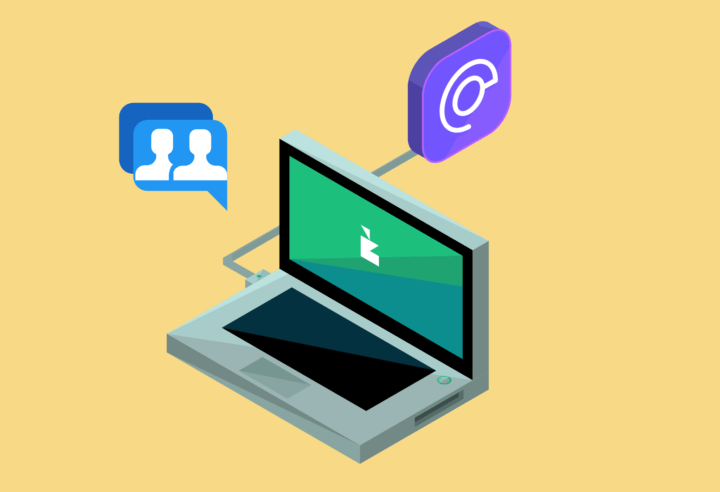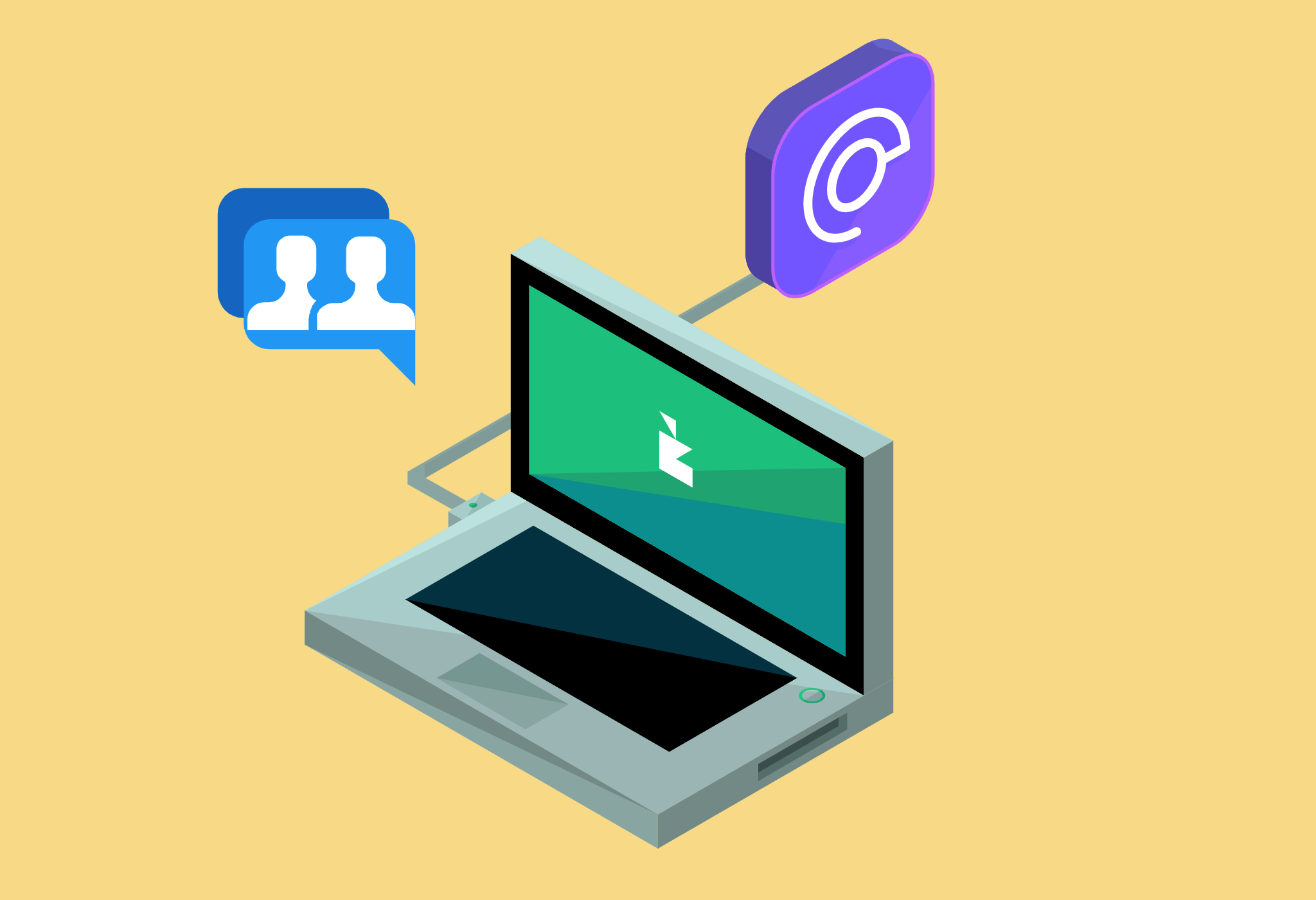But this tactic has helped marketers grow their brands faster than any other technique out there. And you can’t deny the high conversion and reply rates that these cold email outreach campaigns yielded.
By the way, don’t confuse cold emailing with the usual spam emails.
You know, those emails that are obviously sent in bulk to thousands of email addresses with no personalization and offer zero value to the recipient.
Please don’t be that guy.
Instead, follow the tips below to convert your prospects into customers:
How to Close Leads
1 Identify qualified leads
A cold email campaign is a way to make new connections and open doors to new opportunities.
First thing first:
Gather and identify all the qualified leads that you have in stock.
“But what if you don’t have any leads at all,” you ask?
Don’t worry, cold email outreach doesn’t have to feel like a leap in the dark.
If you don’t have any idea where to start, it’s essential to equip yourself with the right tools in hand. LeadFuze, for example, is a tool that can help you find verified prospects in a few clicks.
Using the tool, you can acquire warm leads that you can convert into customers easily.
Note: Here’s a quick gif showing how fast you can find quality results using LeadFuze:
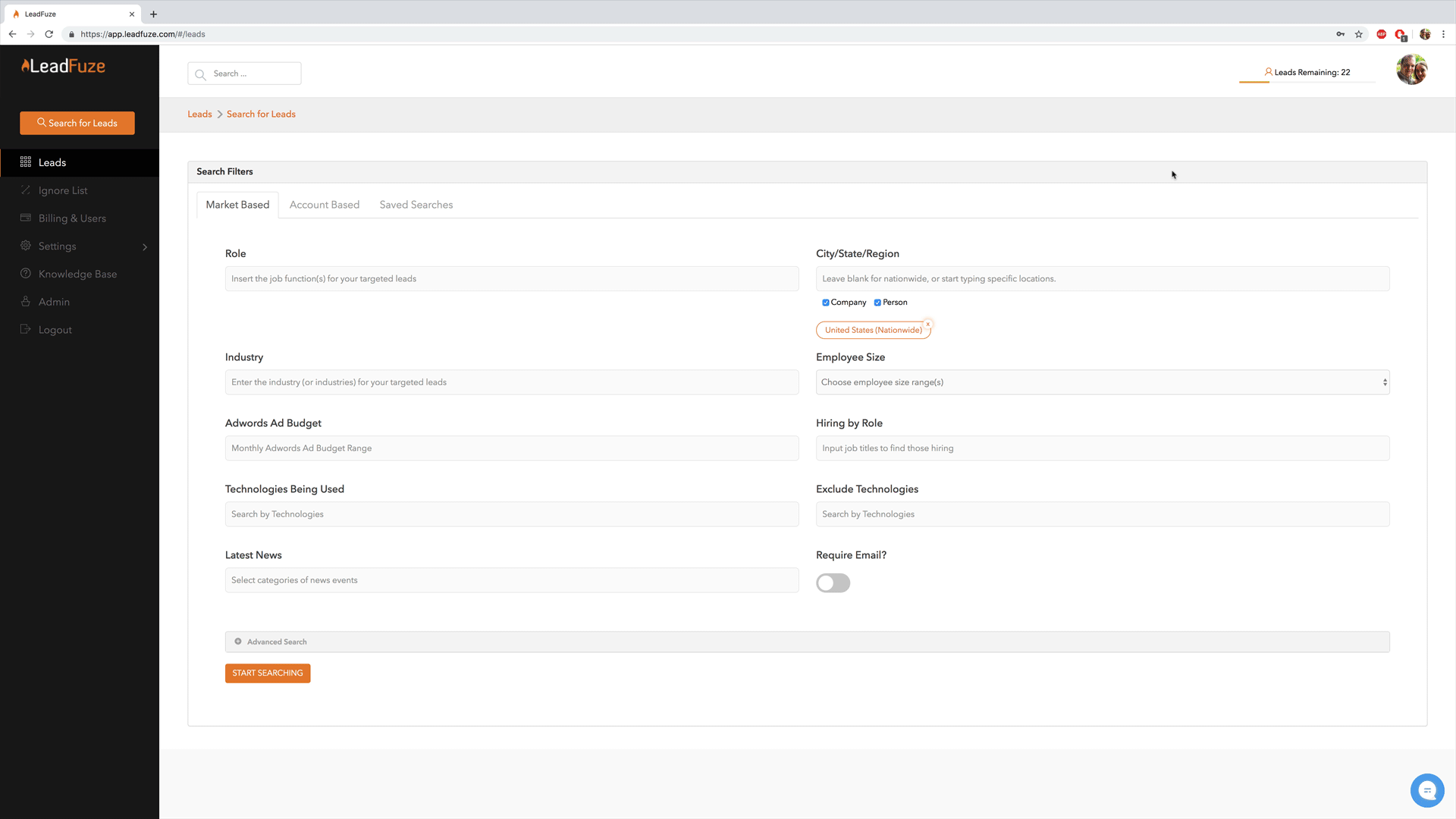
What makes LeadFuze awesome is the wealth of information gathered by the tool about the prospect. It provides an exhaustive list of decision-makers and psychographics of the biggest companies.
Use the information here to learn more about your prospects before reaching out to them. Personalize your approach by providing solutions to any problems they’re encountering at the moment.
Doing so allows you to generate higher response rates from your cold email outreach campaign.
LeadFuze works even better if you’re running an account-based marketing strategy. Leverage the tool’s accurate and re-verified information about companies. Then create highly-targeted content or campaign that you can use to get their business.
2 Organize your data
If you’ve done a lot of inbound and outbound marketing in the past, you will be generating tons of leads for your campaign.
But it’s not enough to have a list of leads to reach out to via cold email.
You need to segment each lead accordingly so you can send them the right emails that will make them convert.
The simplest way to do segmentation is listing out the information in a spreadsheet and grouping it into a list. Share on XThere are multiple ways you can do segmentation, and it will entirely depend on your planned campaigns. But you can start with these things first:
- Geographic
- Job Title
- Industry
- Company
- Budget
- Interests
- Demographics
The simplest way of doing segmentation is listing out all the information you have in a spreadsheet and grouping each of them into the list above.
Now, while you are combining different individuals into one group, it’s important to note the importance of account-based marketing or ABM which you can apply to your campaign.
ABM is a strategic approach that marketers often leverage because of its proven effectiveness.
To put it simply, when you do ABM, you treat each of your lead as a market in their own right rather than just a single sample size.
Think about it:
When closing a deal with a prospect, you are possibly dealing with three to four people. All of them are also involved in the decision-making process. After all, it’s rare for a company only have a single decision-maker.
It’s also where marketers use a highly targeted and personalized campaign to make sure that all the emails sent are highly likely to convert.
If you go the ABM approach, your goal is to identify the members of the company that looks for products and services which you can then use to customize your pitch that meets exactly their needs.
As mentioned above, LeadFuze is a tool that specifically offers ABM solutions to businesses. They have data from demographic up to individual Linkedin profiles. These features can break down your prospects even further so you can give precise product or service offers.
More importantly, they identify the different decision-makers from each departments. This makes reaching out to them much easier and more convenient.
3 Draft your drip campaign
Now that you’ve set up your list of email, it’s time to put your focus on drafting your email campaign.
Using the data you’ve gathered from your ABM tool, come up with different templates to get a response from your leads via cold email.
Each of your recipients probably gets hundreds of generic, spammy looking emails every day.
So remember that a well-crafted email stands out from the rest. And you will see its effects on the numbers you will generate.
While you may have crafted a genius email that is proven and tested by others, your own data might not mirror its success. Each customer has their own likes and standards.
However, there is one formula in making an email that almost everyone follows.
Attention, Interest, Desire, and Action or AIDA are the factors that you must make sure your email contains.
If we break it down further…
- Attention – Grab your reader’s attention through a compelling subject line and personalized message.
- Interest – Tell a story, make a big promise, or showcase the most exciting part of your offer.
- Desire – Tell them what you’re offering and show the benefits. Use the FOMO tactic, if necessary.
- Action – Ask for their response by using effective calls-to-action.
Using the AIDA tactic helps you have a clear process of what you are supposed to have when you draft your emails.
4 Automate email outreach
Once all the critical components are accounted for, you are now almost ready to start your campaign.
With hundreds of data you’ve collected and email templates you’ve written, can you send each one of them alone? Or should you hire an assistant to do it for you?
Neither.
The easiest way is to plug all your email list and your drip campaign using a tool called Mailshake.
Mailshake specializes in helping businesses and individuals start their first cold email campaign.
Here’s a step-by-step guide to start off your very first cold email campaign:
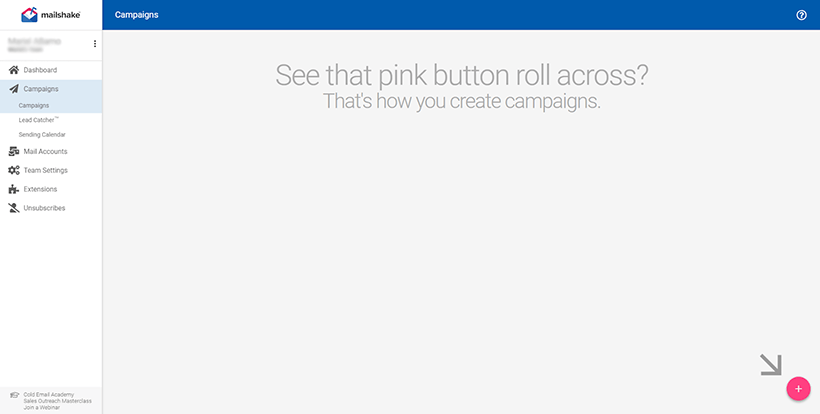
Step 1: Connect your Google or GSuite account and start your campaign by clicking the pink button on the lower right side of the page.
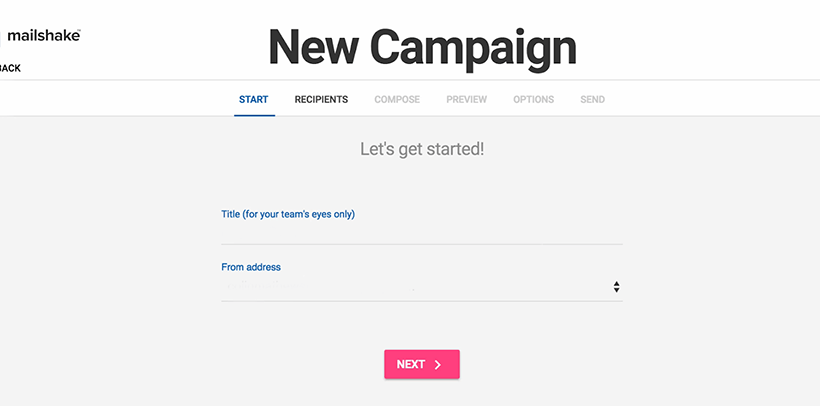
Step 2: Create a title for your campaign and select which Google account you want to send your campaigns from.
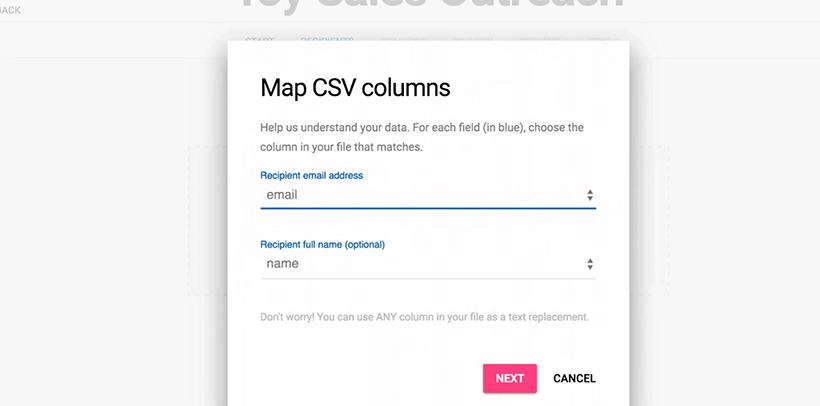
Step 3: Import your contact list (.csv file) and choose which column the emails addresses are located to help Mailshake understand your data.
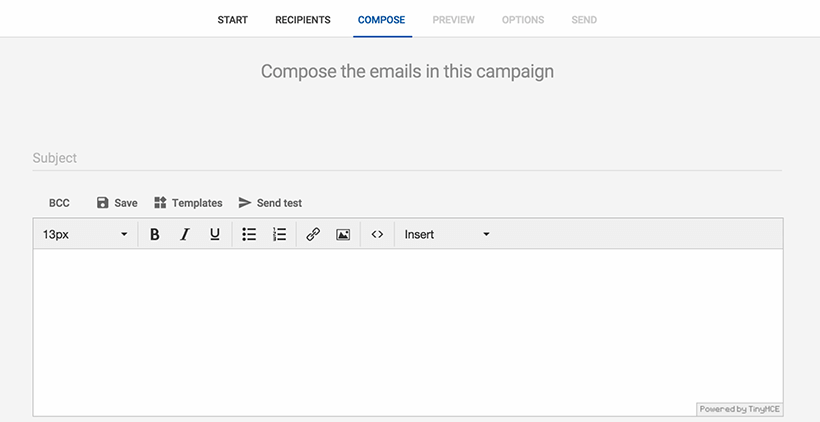
Step 4: Now it’s time to compose your email! Rename the subject line into the subject of your choice. Don’t forget that your subject line is crucial in getting your recipients to open your email.
Also, make sure to personalize your message by clicking the insert drop down option.
What’s best with Mailshake is you can add automatic follow-ups, so you don’t have to check back each day whether your emails got a response or not.
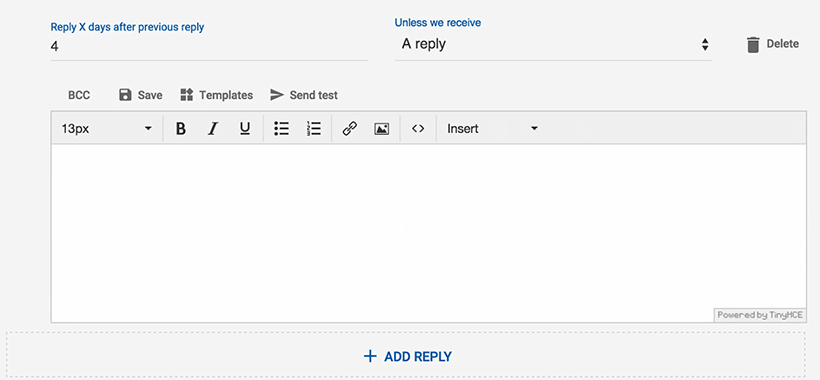
Step 5: Add a custom message and set how many days you want to send it if your prospects haven’t responded yet. You can set up multiple follow-up emails in varying number of days.
Follow up emails is essential because the results of your cold emails don’t show in an instant. Your cold email outreach journey usually goes like this:
- Beginning outreach
- First follow-up email after three days
- Second follow-up email after four days
- Breakup email after seven days
Breakup email, while a bit disappointing on your part, reinforces that you are still reaching out and is always available to help their business.
And before you walk away, you can add some more value (free resources, downloadable PDFs, or a discount) that might still contribute to changing their minds.
5 Track and measure
Using Mailshake’s built-in analytics feature, determine which emails got the highest open and response rates.
Plus, check which emails caused bottlenecks that prevented your campaign from being a success.
By identifying these factors, you will be able to tweak your campaign up to the slightest detail possible.
Even little adjustments such as CTA, first sentence used, or background color will affect the effectiveness of your emails.
Conclusion
This is going to take a lot of hard work and patience, but it will all fall into the right place if you did everything well.
69% of emails get reported as spam just because of their subject line. Share on XRemember that the very first goal of your email is to get your prospects to read it. According to Convince and Convert, 69% of emails get reported as spam just because of their subject line. Therefore, your subject is going to play a huge role in your conversion.
After that first open, make sure to keep them engaged using the AIDA approach.
Lastly, and I can’t reiterate this enough:
Focus on building relationships.
Cold emails are all about warming up your leads and prospects to your business. And what better way to break than to treat them as people just like yourself.
Your leads know when they are just being sold to. But they also know the difference of selling for selling’s sake versus one where they are getting value.
Therefore, make it crystal-clear to them that you are there to help. And if all goes well, they will come back to you with their wallets doing the talking.
Want to help contribute to future articles? Have data-backed and tactical advice to share? I’d love to hear from you!
We have over 60,000 monthly readers that would love to see it! Contact us and let's discuss your ideas!
